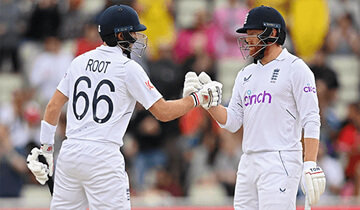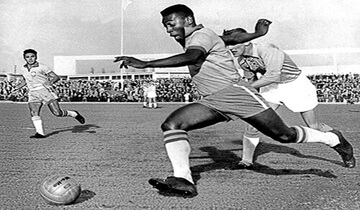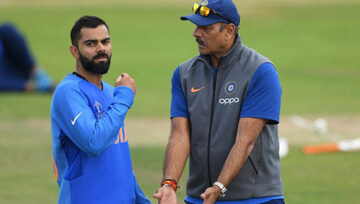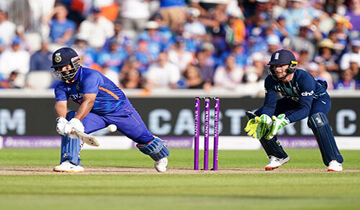Understanding Innings in Baseball
The Standard Game
Baseball is played in innings rather than a set time period like many other sports. Innings alternate between the two teams batting and fielding.
Typically professional baseball games last 9 innings, with extra innings if tied. The number of innings can vary in amateur and youth leagues.
Understanding innings is key for both players and fans to follow the format and scoring of baseball games.
Shorter Youth Games
In professional Major League Baseball, a standard regulation game consists of 9 innings. The away team bats first in the top half of the innings, while the home team bats in the bottom halves. This allows each team 9 chances on offense to score runs.
If the score is tied after 9 innings, additional innings are played until one team has more runs at the end of an inning. There is no limit to the number of extra innings that can be played. The longest game in MLB history went 25 innings over two days before finishing.
For amateur and youth baseball, shorter 5-7 inning games are common. Little League uses 6 inning games for ages 11-13 and 7 innings for older divisions. These shorter games allow players more turns at bat and accommodate shorter attention spans.
Counting Innings
Innings are counted from 1 to 9 rather than a time period. This keeps the format consistent even if games last different lengths. Half innings with the home team batting are sometimes annotated by adding “bottom” e.g. “bottom of the 5th inning.”
Keeping track of the current inning is key for players, coaches, and fans. The inning affects strategy for batting, pitching changes, and substitutions. It also determines if a team’s lead is safe or if more runs are needed. Understanding innings is vital for appreciating the story and unfolding drama of a baseball game.
So, you might wonder, where did baseball originate? The genesis of baseball can be retrospectively mapped to the 1840s, wherein its conception was initiated, subsequently affording it worldwide recognition and becoming the quintessential framework for contemporary baseball competitions.
How Many Innings Are in a Baseball Game?
Each Inning’s Structure
In every inning, the away team bats first, trying to score runs against the home team’s pitchers and defense. Once three outs are recorded, the teams switch roles. Now the home team has their chance to bat and score. This back-and-forth continues until the end of the 9th inning.
At the start of each inning, both teams reset with 0 outs and no one on base. No run carry over from previous innings - it’s a clean slate each time. This allows strategic decisions, player substitutions, and pitchers to fully reset.
Why 9 Innings?
The 9-inning standard allows starting pitchers to face 27 batters, which typically allows them to pitch 7-9 innings before tiring or being removed for strategic reasons. Only the best starters will pitch a complete game from start to finish.
Bullpen pitchers handle the remaining outs, often specializing in matchups against left or right-handed hitters. The 9 innings test a team’s pitching depth and manager’s ability to deploy it effectively.
Extra Innings
If the game is tied after the completion of the 9th inning, extra innings are played. The 10th inning and any subsequent innings needed are played by the same rules. Teams continue batting and pitching until one team has the lead at the end of an inning.
There is no limit to the number of extra innings. However, some amateur leagues and youth sports will impose a finite extra innings limit and revert to tie games if still even after that. MLB games play to resolution no matter how long it takes!
The 9-inning system provides a set framework that makes baseball predictable yet still ripe for dramatic comebacks. It’s just enough innings to allow great strategy and pitching changes, while also ensuring conclusion in a reasonable timeframe. That’s the magic behind the long-standing standard of 9 innings.
How an Inning Works in Baseball: The Top and Bottom Halves
The Top Half of the Inning
During the top half of the inning, the visiting team is at bat and tries to score runs against the home team who is playing defense in the field. Once the visiting team makes three outs, their half of the inning is over and the teams switch roles.
The Bottom Half of the Inning
The bottom half of the inning then begins with the home team coming up to bat while the visiting team heads out to field. The home team then gets their chance to score runs before they make three outs and the inning comes to an end.
Switching Sides Each Inning
After the bottom half of the inning ends, a new inning starts up again with the visiting team hitting in the top half. This back and forth sequence continues through nine innings (or extra innings if needed).
Advantage of Batting Last
The advantage of batting last in an inning is that the home team gets the final chance to score runs or win the game in the bottom half before the teams switch sides.
Equal Number of Turns on Offense/Defense
Both teams play offense and defense for an equal number of innings unless the home team holds a lead entering the bottom of the ninth inning, in which case they do not hit if they are ahead.
Understanding how the top and bottom halves of an inning work is key to following the sequence of play in a baseball game.
Shortening Baseball Games: When Can They End Early?
Baseball games are known for their leisurely pace and lack of a firm endpoint. However, there are several scenarios in which a Major League Baseball game can end before the standard 9 innings are completed. This allows games to conclude faster when the outcome is already determined.
Home Team Leading After Top of 9th
The most common early finish occurs when the home team is winning after the top half of the 9th inning. Since the home team bats last, if they have the lead before taking their final at-bats, the game ends right there with a victory for the home team. This avoids the need to play the bottom of the 9th inning when it would not impact the result.
Home Team Takes Lead in Bottom of 9th
Another situation where games end early happens when the home team takes the lead during their at-bat in the 9th inning. As soon as the winning run crosses home plate, the game is over, even if there are fewer than 3 outs recorded. Again, this is because the home team does not need to bat again after taking a lead in the final inning.
Away Team Leading After 9th
Conversely, if the away team is ahead after the 9th inning and the home team fails to overcome the deficit in their half, the game concludes without the away team needing to bat again. The result has already been determined so playing the top of the extra inning would be pointless.
Early Endings Due to Weather
Finally, games can be ended early due to inclement weather before 9 innings are finished. However, at least 5 innings need to be completed for the game to be considered official. If the home team is ahead after 4.5 innings when the game is called, they are declared the winner. Anything less is considered a suspended game to be continued at a later date.
While traditionalists may scoff at shortening baseball games, these early endings help move things along when the outcome is no longer in question. And in an era when pace of play is a concern, wrapping up games more efficiently while preserving the integrity of the results makes sense for the modern fan.
Why Baseball Games Can Drag On for Hours
Pitching Changes
One of the biggest causes of drawn out games is the frequent pitching changes that occur. Teams will often swap pitchers between batters or innings to gain favorable matchups against hitters. However, this forces the new pitcher to warm up on the mound, delaying the game for several minutes each time.
Commercial Breaks
The rise of television broadcasting has led to mandated commercial breaks between innings, pitching changes, and after a select number of hits or runs. These 2-3 minute ad slots may not seem long, but they add up over the course of a 9 inning game.
Time Between Pitches
Even during active play, there is substantial down time as pitchers step off the rubber and reset between throws. New rules have tried to speed this up by implementing pitch clocks, but many pitchers still average 20+ seconds between pitches.
Replays and Reviews
Umpire reviews of home runs, force outs, and other close plays through video replay also pause the game frequently. While aiming to get calls right, replays often take 3 minutes or more to complete.
Player Rituals
The routines and habits of players on and off the field, such as adjusting gloves or equipment between pitches, further extends dead time. Batters can also prolong at-bats by stepping out of the box frequently.
Injuries and Ejections
Unplanned events like player injuries, manager arguments, and ejections can temporarily halt play as trainers, coaches, and umpires handle the situation. This often takes several minutes to clear up.
Extra Innings
If a game is tied after the standard 9 innings, extra innings are played with no limit to resolve the game. Some extra inning affairs have added an hour or more of playing time to the original game length. The longest game in MLB history lasted 25 innings over two days totaling 8 hours of game play.
While baseball has taken steps recently like pitch clocks to speed up the pace of play, the lack of a game clock fundamentally allows baseball contests to drag on with no hard stoppage of play. The tension and drama of a tied ballgame going to extras can be exciting for fans, but also leads to long nights at the ballpark.
How Many Innings Do Kids Play in Baseball and Softball?
Baseball and softball are popular youth sports in many communities. While professional baseball games go 9 innings, youth leagues often play fewer innings based on the age group. Here’s a look at how many innings kids typically play in baseball and softball at different ages and levels.
Innings in Little League (Ages 9-12)
Little League is one of the most common youth baseball and softball organizations in the United States. For the Major Division (ages 9-12), Little League regulations state that games go 6 innings. The Minor League level (ages 7-11) and Tee Ball level (ages 5-8) play shorter games of 4-6 innings.
If one team is ahead by 10 or more runs after 4 innings (or 3.5 innings if the home team is ahead), the mercy rule goes into effect and the game is called. So a Little League game can last anywhere from 4 to 6 innings depending on the score.
Other Youth Baseball and Softball Leagues
While Little League uses a 6 inning standard for ages 9-12, other leagues may vary. For example, Cal Ripken divisions often play 6 innings like Little League but sometimes play 7. Softball games for girls ages 9-12 also commonly go 6 innings.
For younger kids around ages 6-8, 4-5 innings is typical. At older ages like 12-14, 6-7 innings is the norm. The mercy rule ending a game if one team has a big lead often applies across leagues.
In summary, the number of innings in youth recreational baseball and softball depends on factors like the players’ ages, level of play, and specific league rules. But 4-6 innings is typical for most youth games depending on the age group. The emphasis is on play time and participation rather than adhering strictly to major league rules.
Conclusion
Here is a brief summary of the key points about innings in baseball:
- Baseball is played in innings, which alternate between offensive and defensive halves for each team. Innings are the format for scoring and advancing in baseball.
- The standard regulation game has 9 innings. However, games can go into extra innings if tied after 9. Also, youth leagues often play fewer innings.
- During an inning, each team gets an opportunity to bat (offense) and field (defense). When 3 outs are recorded, the teams switch roles.
- The visiting team always bats first in an inning, aiming to score runs. The home team bats second trying to match or exceed the visitors’ run total.
- After 9 innings, the team with the most runs wins. If tied, extra innings are played until one team has more runs at the end of an inning.
So in summary, the inning structure of alternating offense/defense and 9 standard innings are key concepts for understanding and tracking baseball games.







































